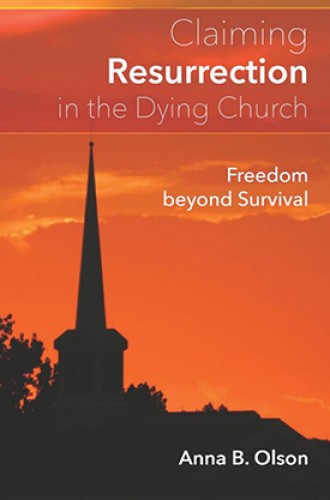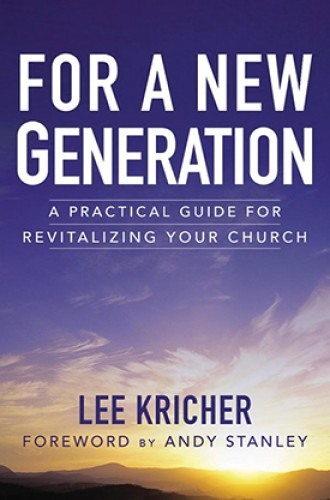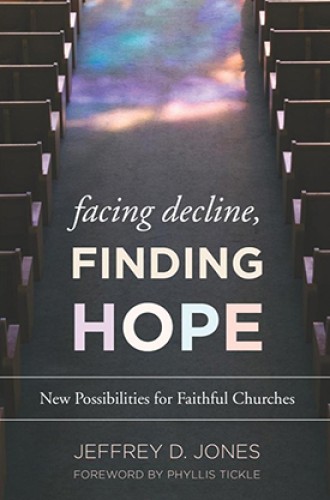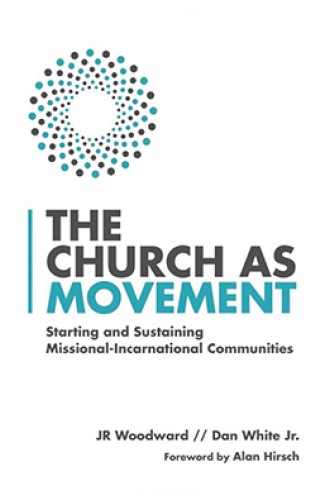Can we revitalize our dying church? Should we?
Four books on congregations in decline, and what pastors can do
“I wish I could serve a growing church just once in my career.” The speaker was a fellow minister, the pastor of a downtown church that was an architectural gem, built to seat 1,000 worshipers. Now barely a fifth of that number turned up on Sunday. What do you say to him?
There was nothing stopping him from turning that church around. After all, there were thousands of unchurched people in town, and an army of consultants and a library of books offered advice on church renewal. Any success he had would earn plaudits from the denomination, invitations to join the speaking and consulting circuit, and perhaps even a book contract. He could at least try to spiff up the place with a band, or new signage, or a new youth minister. Another option would be to guide the church through the stages of grief and watch the denomination sell the property to a developer.
Read our latest issue or browse back issues.
Books about ministering in a declining church cover a wide spectrum. Some confidently offer a turnaround strategy, while others focus on making peace with dying. Each of the books under review here is written by a pastor and so is concerned with the psychology of leading a dying congregation.
Whether churches are dying or growing, pastors tend to get too much of the blame or the credit. A congregation’s growth or decline depends on many other factors as well. And yet pastors are not without agency. Churchpeople look to us to lead—even when they are dead set against changing anything. What do we do?
St. Mary’s Episcopal in Los Angeles was like many mainline churches when Anna Olson arrived. It had been founded in a bygone era as a Japanese congregation. Many of the original members had moved away, and Koreans and Latinos had moved into the neighborhood. St. Mary’s displayed a copy of the evacuation order that had sent Japanese-Americans into internment camps in World War II—a reminder of the racism that the members had braved. It was now faced with other challenges that were also proving hard to brave.
“Most historic churches double as giant storage facilities,” Olson writes. The accumulated detritus suggests to new people there is no room for them, and so it needs to be culled. Olson acknowledges the anxiety longtime members feel—they fear “being discarded themselves.” That sentiment is at least better than the even deeper resignation Olson detected among some parishioners: “Do whatever you want. I’ll be dead soon anyway.”
Olson is inclined to accept death. We have a God of resurrection, after all, who can be trusted. And yet around the edges of her book one can see that St. Mary’s has revitalized itself under her leadership (it’s not something that she is going to crow about).
The church was purged of its overflowing junk, which made room for neighbors to come and dance, spray paint murals, play tubas. St. Mary’s members got out into the neighborhood and tasted the food, smelled the smells, and learned how to “rejoice with those who rejoice, weep with those who weep.”
Olson did some personal work as a leader, making a pilgrimage to a site where her parishioners’ forebears had been interned during World War II, marveling at how Japanese children in concentration camps had donned white wigs to celebrate America’s freedom-loving founding fathers. The church picked up religious practices that it could share with neighbors, such as building a shrine to Our Lady of Guadalupe. Olson soon noticed neighbors leaving prayers at the site and tending to it.
Olson has some directions for those trying to lead a turnaround. Jesus teaches us to forgive “trespasses,” she notes, which is an odd word unless you’re trying to invite neighbors into your holy space, in which case it is the perfect term. A survey showed that neighbors wanted the place to remain a church, even if they didn’t go there. Now more of them do attend, and perhaps there is a future for St. Mary’s. Books like these can be humorless, but Olson’s is far from it. It made me want to get out in my neighborhood and look for ways that God is already at work.
As a rule, the more evangelical an author of a church renewal book is, the more confident it is in offering a blueprint for others to follow. When Lee Kricher writes of “strategies” that can “ensure that a church will connect with and stay connected with the next generation,” I wondered what room was being left for the Holy Spirit. My criticism reflects a very old rift in American Protestantism between those who think you can plan for a revival and those who think such planning presumes on God’s sovereignty.
Nevertheless, I found Kricher showing an impressive willingness to be vulnerable. He writes that when one member threatened to leave the church, he worried about others following—which would mean he was finished as a leader.
Kricher founded Amplify Church in Pittsburgh but left the church for a career in coaching. The church declined precipitously after that, and it decided to hire him back to attempt a turnaround. Many of the programs that were running when he returned were ones that he had started in his earlier tenure. His hiring was controversial, and some people left the church, but he managed to get traction with those who stayed.
The church hired ministers to youth and children even though there were few youth or children. Staff offices were turned into living room–styled meeting rooms for small groups. Unfruitful ministries were canceled, the entire program streamlined, and Kricher focused his energy on preaching.
Kricher demolishes the church’s usual excuses for failing to grow, and its “excuses for not trying,” such as: “We are going to attend to the people here and their maturity before we can reach out to others.” Actually, Kricher says, in the Bible believers never do one without the other. He points to a missional Catholic parish that revitalized itself and asks: “Does your denomination . . . give you less local autonomy than the Roman Catholic Church?” Many of our fences are imagined, he says. “You have more leeway than you think.”
Kricher draws on the popular names in the field of leadership to offer some directives: build a guiding coalition, don’t rely on a weak committee structure (John Kotter). The leader’s job is to be a “chief reminding officer,” constantly seeding the vision in every opportunity (Patrick Lencioni). Renewal requires sacrifice, including of liturgical treasures that once worked but now keep people away. Kricher tells of a storefront church in which the minister’s dog would bark, delighting the 12 regulars but sending any guest fleeing for the exits. What are the barking dogs in our congregations?
In a final haunting story, Kricher reports on a conversation he had with a minister who envied Kricher’s growing church and wished his congregation too had money “sitting around.” Kricher responded that his congregation never had that and still didn’t—it spent what it had on ministry. Actually, the other minister replied, his church did have the money, it just wasn’t spending it. It had $1 million laid aside for a rainy day. Kricher writes, “I felt no sympathy for their situation. None whatsoever.” That story speaks to lots of congregations that have their treasures stored up in buildings and endowments. Why aren’t we using them?
Turning back to the mainline side of the fence, Jeffrey Jones’s Facing Decline, Finding Hope combines some traditional mainline axioms with his own set of quotes from the leadership literature. Jones taught ministry studies at Andover-Newton Theological School for many years and pastored American Baptist churches before that.
His book has virtues, including a sense of humor. He tells of returning to his apartment to find the stereo system stolen. He closed the door and opened it again, hoping for better results this time! A similar wishful thinking pervades mainline revitalization efforts, he suggests.
But his book relies too much on the axioms. To describe the current institutional disruptions the church faces, he cites the late Phyllis Tickle’s winsome image of the church holding a “rummage sale” every 500 years. The image captures the scope of the large-scale forces at play and Tickle’s own legendary homespun wisdom, but it also lets us off the hook. Trying to head off a twice-a-millennium event is clearly hopeless. The image suggests that the best we can do is hunker down, get comfortable, and wait to see how things look when the dust settles.
And sure enough, Jones advises that churches minister to those already present, provide meaningful experiences for them, and let go of results altogether. Benign acceptance seems to be the solution.
More than other writers, Jones delves into theology, but I think his theological moves head in the wrong direction. He says Ezra and Nehemiah were wrong to rebuild the temple and reinstitute the priesthood. They should instead have left room for Israel’s prophetic spirit and not reinstitutionalized the faith.
We can guess where this is going: institutions are bad, movements are good. Jones says the Reformation tradition’s description of church as a place where “the word is rightly preached and the sacraments properly administered” is a priestly claim born of cultic practices (boo!), not mission (yeh!) Those who putter around in such ecclesial pedantry are merely “rearranging the deck chairs on the Titanic.” These kinds of responses do more to justify disintegration than offer a strategy for responding to it.
Can evangelical theology do better? J. R. Woodward and Dan White give us reason to be hopeful. They write, they say, out of a strand of missional theology has been “developing over the last century.” This position is critical of the big-box church in America, what the authors call the “Christian-industrial complex.” They assail what they see as the church’s fetishization of the preacher, the band, and the budget, all of which is very American.
With Jones, they want the church to see itself as part of a missional movement. Jesus doesn’t say to go and start a church service—he says to go and make disciples. And in that effort Jesus values smallness, not greatness. The missional church knows it must learn the neighborhood, find in it people of peace, host and be hosted at table, and build “thick community” through authenticity, honesty, and mutual submission. Some missional literature makes the mistake of throwing out the church altogether. Woodward and White simply want the church to be more like Jesus.
Woodward knows of what he speaks. He was a church planter in Virginia and Los Angeles before abruptly stepping away. He explains that Jesus had been his first love, but the church became his “mistress.” He decided that the church’s consumerist piety and its fixation on felt needs and affinity groups got in the way of genuine leadership and discipleship.
The prescriptions here are also a mash of business tips and theology. The best story comes from White, a pastor in Syracuse, who tells of a man who wandered into a dinner church. He asked who these people were who were sharing their lives and their food. When it was time to share concerns, the man spoke of his disappointment at how his life had turned out and how lonely he felt. Others offered comfort. He asked if he could come back.
Reaching one person on one night is hardly a meteoric event. But in the missional literature, it looms large. The authors say the missional church will produce less than we expect the first few years and more than we could hope in years ten to 15. Discipleship is about being in it for the long haul.
I once heard Eugene Cho, the accomplished pastor at Quest Church in Seattle, say that most of the churches mentioned in the New Testament are long gone. (Rome, arguably, is one that is still here.) Our very scriptures suggest that a congregation’s life is going to be temporary
Cho should know. The multiethnic Quest Church worships in the building that formerly housed Mars Hill, a megachurch that imploded. The building could have been turned into lofts or offices, but instead it houses one of the most interesting, justice-seeking congregations in North America.
The church should not be afraid of death, because God is always practicing resurrection. Sometimes that’s happening right under our noses.
A version of this article appears in the print edition under the title “Can these churches live again?”










